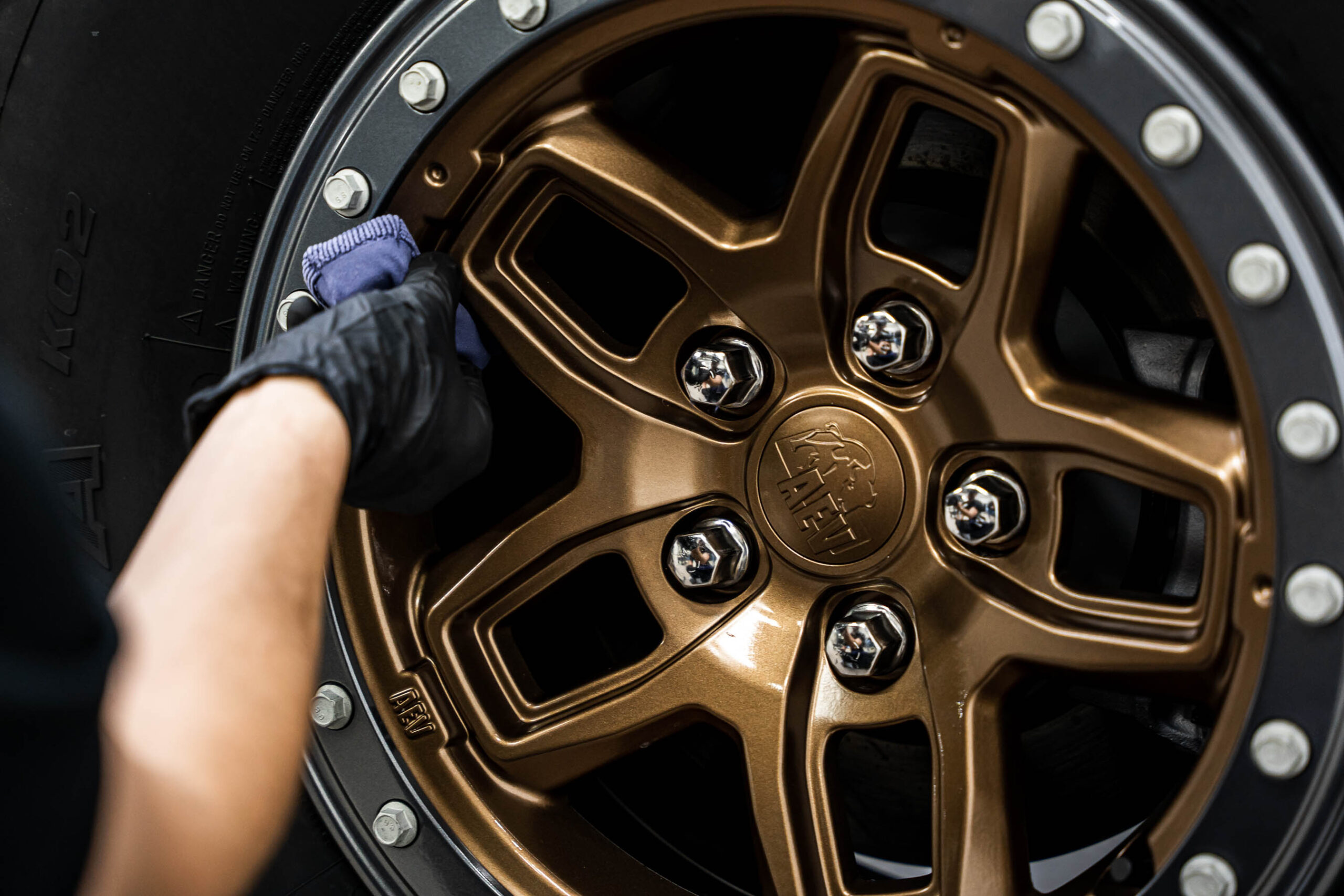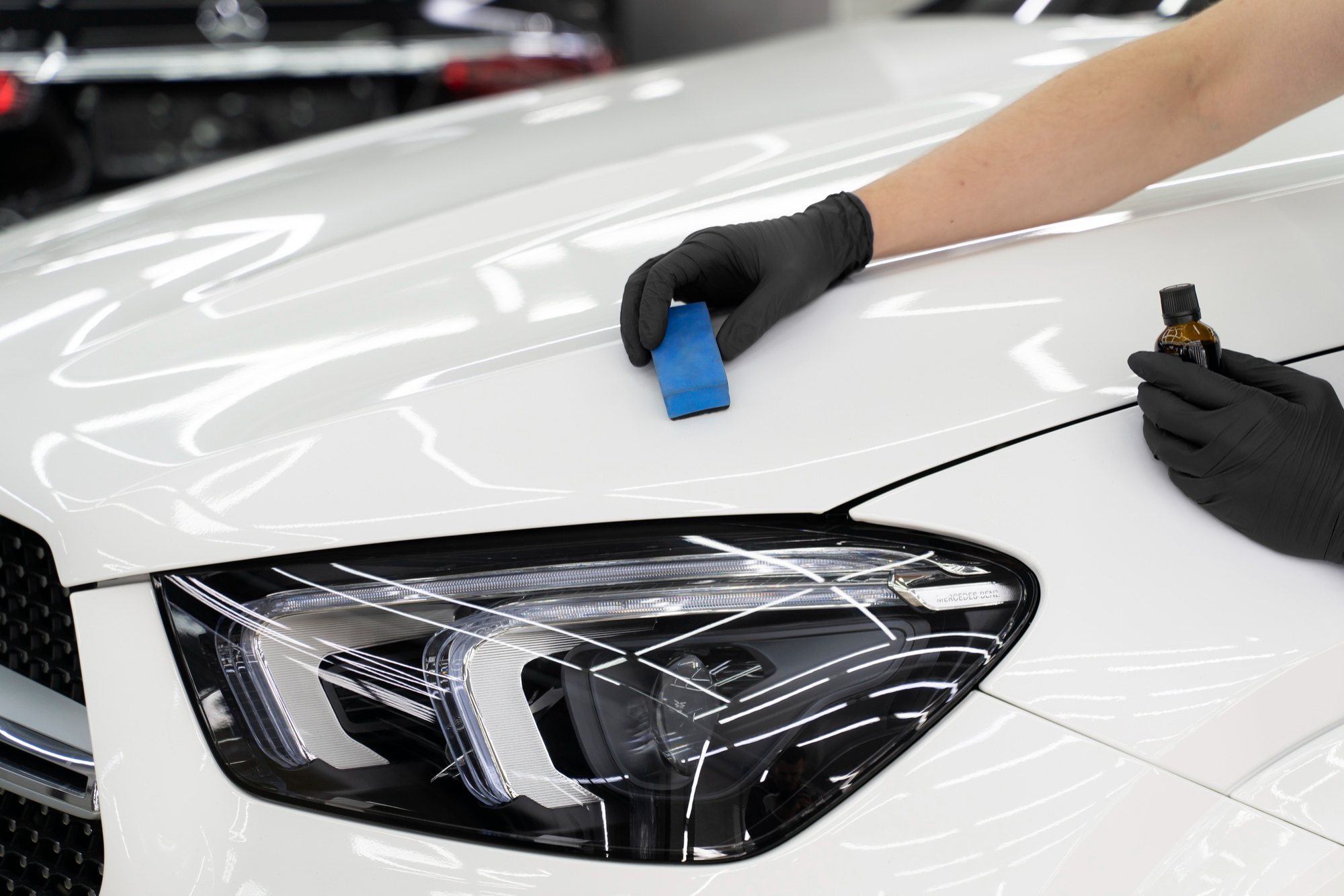The Science Behind Ceramic Finishing: Exactly How It Improves Your Car's Aesthetic and Longevity

Understanding Ceramic Finishing Chemistry
The chemical make-up of ceramic finishings plays an important duty in determining their longevity and protective buildings on vehicle surfaces. Ceramic coatings are commonly comprised of silicon dioxide (SiO2), which is a main component giving firmness and heat resistance. Various other active ingredients such as titanium dioxide, silicon carbide, and polysilazanes are often contributed to improve certain properties like UV resistance, adhesion, and hydrophobicity.
Silicon dioxide, also recognized as silica, develops a transparent and strong layer on the lorry surface when used appropriately. This layer serves as a guard, protecting the paint from ecological impurities, UV rays, oxidation, and chemical spots. Titanium dioxide aids in blocking harmful UV rays that can trigger paint fading and wear and tear. Silicon carbide is recognized for its abrasion resistance, making the ceramic finish hard and resilient against physical damages. Polysilazanes are used to improve the covering's flexibility and adhesion to the automobile's surface area, making sure lasting defense. Understanding the chemistry behind ceramic coatings is critical for both applicators and vehicle proprietors to appreciate the worth and advantages these finishes supply in preserving the aesthetic charm and durability of vehicles.
Enhanced Gloss and Mirror-like Complete
Recognizing the chemical composition of ceramic finishings not only exposes their protective residential or commercial properties however likewise clarifies exactly how they add to achieving a boosted gloss and mirror-like surface on automobile surfaces. The trick to the glossy result depends on the nano-ceramic bits present in the finish. These fragments fill in microscopic pores and flaws on the surface, developing a smooth and level finish. As light hits the coated surface area, it mirrors consistently, giving the look of a deep, glossy sparkle. Additionally, the chemical framework of ceramic layers enables them to create a strong bond with the lorry's paintwork, preventing oxidation and keeping the clarity of the coating in time. This bond additionally withstands environmental contaminants, such as dust and gunk, that can dull the sparkle of the automobile. The combination of filling up homes, light reflection, and durable protection makes ceramic finishings a popular choice for those seeking a mirror-like and dynamic finish for their lorries.

Influence On Paint Security and Durability
Ceramic finishes for automobiles considerably boost the long life and protection of the paintwork. By forming a chemically resistant layer on top of the lorry's clear layer, ceramic coatings serve as an obstacle versus various environmental pollutants that can damage the paint gradually. These finishings are designed to push back dirt, water, roadway salt, bird droppings, and other harmful compounds, decreasing the risk of paint oxidation and deterioration. Furthermore, the firmness of ceramic finishes offers a level of scrape resistance, helping to preserve the vehicle's appearance for a prolonged duration.
In regards to longevity, ceramic finishings use a long lasting remedy compared to typical waxes or sealants. While waxes may last a couple of weeks to a few months, ceramic coatings can in 2015 with correct maintenance. This prolonged life expectancy not just lowers the regularity of reapplications but also conserves effort and time over time. In general, the protective residential or commercial properties of ceramic coverings contribute considerably to preserving the automobile's paintwork and boosting its aesthetic allure over an extended duration.
Resistance to Impurities and Severe Aspects
With the safety shield offered by ceramic finishes against numerous environmental pollutants and components, automobiles are able to preserve their pristine appearance despite exposure to rough problems. Ceramic coatings produce a strong barrier that wards off water, dirt, dust, and other usual pollutants, avoiding them from bonding to the automobile's surface.
In addition, ceramic coatings provide UV defense, securing the automobile's paint from the sun's dangerous rays that can create fading and oxidation. This resistance to UV damages aids maintain the color intensity and shine of the paint for longer durations. By forming a lasting and resilient barrier, ceramic coatings guarantee that the automobile's outside continues to be protected versus a large range of impurities and extreme aspects, preserving its aesthetic allure and longevity.
Application Methods and Maintenance Tips
For optimal results when applying ceramic coverings to vehicles, utilizing correct strategies and sticking my explanation to advised upkeep methods are vital. Before applying the ceramic layer, it is crucial to extensively tidy and decontaminate the car's surface to ensure correct adhesion.
When using the ceramic covering, it is suggested to operate in small sections to guarantee also protection and to stop the product from drying out too swiftly. Using applicator pads or microfiber fabrics, apply the finishing in a crisscross or up-and-down motion, relying on the item's instructions. After the finish is used, allow it to cure for the specified time before rubbing off any residue.
In regards to maintenance, routine cleaning with pH-neutral soaps and avoiding rough chemicals or unpleasant tools will assist preserve the ceramic coating's honesty. Periodic examinations for any kind of damages or endure the covering can likewise assist preserve its protective buildings gradually.

Verdict
In verdict, ceramic layer enhances a vehicle's aesthetic charm and resilience with its chemical composition, offering a shiny finish and safeguarding the paint from ecological contaminants. Its resistance to rough aspects and simplicity of maintenance make it a prominent selection for vehicle proprietors looking to preserve the look of their vehicles. Generally, ceramic layer is a clinically backed solution for preserving the look and long life of your car.
Recognizing the chemistry behind ceramic coatings is critical for both applicators and automobile owners to value the value and advantages these finishings provide in keeping the visual appeal and longevity of lorries. (ceramic pro)
Comprehending the chemical structure of ceramic coverings not just exposes their protective residential properties however additionally drops light about his on exactly how they add to achieving a boosted gloss and mirror-like finish on vehicle surface areas. By developing a chemically resistant layer on top of the automobile's clear layer, ceramic coatings act as a barrier this hyperlink against different ecological contaminants that can damage the paint over time. In general, the safety buildings of ceramic coatings add significantly to preserving the lorry's paintwork and boosting its visual allure over an extensive duration.
In final thought, ceramic layer boosts a lorry's visual allure and resilience with its chemical structure, offering a shiny surface and protecting the paint from ecological pollutants.